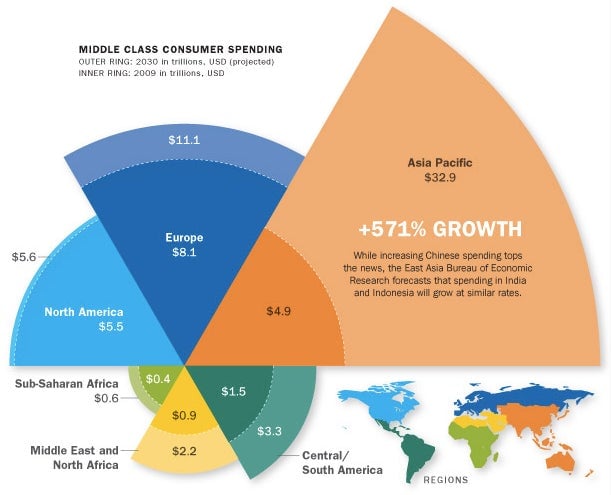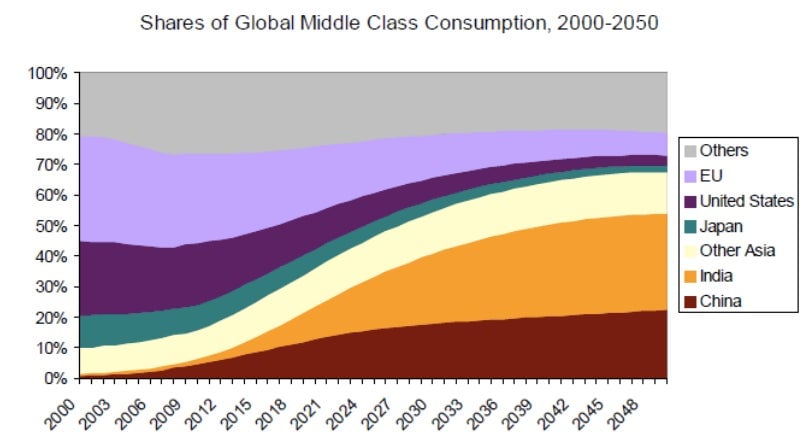The world’s middle class will number 5 billion by 2030
Millions of newly affluent people in emerging economies are reshaping and resizing the global middle class. The world’s middle class will swell from 2 billion to almost 5 billion by 2030, with most of that growth coming from developing countries, according to the Organisation for Economic Co-operation and Development. The world population in 2030 is expected to be about 8 billion.

Millions of newly affluent people in emerging economies are reshaping and resizing the global middle class. The world’s middle class will swell from 2 billion to almost 5 billion by 2030, with most of that growth coming from developing countries, according to the Organisation for Economic Co-operation and Development. The world population in 2030 is expected to be about 8 billion.
The OECD defines “middle class” as making $10 to $100 a day, adjusted for the purchasing power of each currency. Today, people in developing countries make up almost 30% of the world’s consumer spending, up from 18% a decade ago as they become middle class. This change, what the US National Intelligence Council called a ”tectonic shift,” is one the most important trends for the next several decades.
For one, growth of both multinationals and the global economy will depend more and more on these emerging market consumers, especially in Asia. They are spending more on basic necessities like homes and food, but also extras such as meat, mobile phones, and air conditioners. Global middle-class spending should rise from $21 trillion today to $51 trillion in 2030.

The rising purchasing power of these new shoppers has retailers and market analysts, who have given emerging market consumers their own moniker of “the next billion,” salivating. Multinational corporations have been trying to tap into the Chinese consumer market via tailoring goods to local tastes (“hot pot” flavored Lays chips or “green tea” Oreos).
But emerging market consumers are diverse and difficult to predict. Multinationals like Wal-Mart have so far been beaten by local competitors in China. Home Depot has all but left the country after staking its strategy on the mistaken belief that wealthy Chinese would be into Western-style DIY home projects.

Besides retail purchasing power, growing middle classes could be good for the individual country. Some academics argue that a middle class is a prerequisite for stronger, more sustainable economic growth (economic historians say the existence of British and European middle classes inspired faster growth in the 19th century). Countries with smaller middle classes tend to be easily polarized and focused on redistributing resources, so the argument goes. Political awareness may be another effect: As middle classes grow, so should demand for government accountability, rule of law and general economic reforms.
